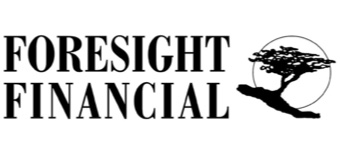


Donating to Charity Using Life Insurance
If you are interested in creating a legacy at your death by making a charitable donation, you may wish to investigate using life insurance for that purpose. There are different ways you can structure life insurance for use in philanthropy. The most common are:
Gifting an Existing Life Insurance Policy
If you currently own a life insurance policy, you can donate that policy to a charity. The charity will become owner and beneficiary of the policy and will issue a charitable receipt for the value of the policy at the time the transfer is made, which is usually the cash surrender value of the existing policy.
There are circumstances, however, where the fair market value may be in excess of cash surrender value. If for example, the donor is uninsurable at the time of the transfer, or if the replacement cost of the policy would be in excess of the current premium, the value of the donation may be higher. Under these conditions, it is advisable for the donor to have a professional valuation of the policy, done by an actuary, prior to the donation.
Any subsequent premium payments made to the policy by the donor after the transfer to the charity will receive a charitable receipt.
Gifting a New Life Insurance Policy
In this situation, a donor would apply for a life insurance policy on his or her life with the charity as owner and beneficiary of the policy at the time of issue. All premiums made by the donor on behalf of the charity would be considered as charitable donations.
Gift of the Life Insurance Death Benefit
With this strategy, an individual would retain ownership of the policy but would name the charity as the beneficiary. Upon the death of the insured, the proceeds would be paid to the charity and the estate of the owner of the policy would receive a charitable receipt for the death benefit proceeds. The naming of the charity can be made at any time prior to death. There is no required minimum period that must be satisfied prior to naming the charity as beneficiary.
As long as the life claim is settled within 3 years of death, the executor of the estate has the option to claim the life insurance donation on:
-
The final or terminal return of the insured;
-
The prior income tax year’s return preceding death of the insured;
-
Both the current and prior year tax returns with any excess amount able to carry forward for the next five subsequent years;
-
Any combination of the above.
With this strategy, there are no charitable receipts issued while the insured is alive, only after death when the insurance proceeds are paid to the named charity.
Replacing Donated Assets to the Estate
There may be circumstances where a sizeable donation is made to a charity that would greatly reduce the value of the estate that would be left to family or other heirs. For donors who are concerned that their heirs would receive less than originally intended as a result of this donation, purchasing life insurance to replace the donated asset is a possible solution.
The previous headings represent the ways in which life insurance can enhance or complement philanthropy. As well, life insurance can be a valuable addition to a charitable giving program in that it enables the donor to bequeath a larger donation than otherwise would be possible with just hard assets alone.
If you have been or are contemplating making a significant charitable donation, be sure not to overlook how life insurance can enhance your gifting plans.

Debt Is a Four-Letter Word
Debt today is so common, you might say it can’t be avoided. Most people are not in a position to purchase a house or car for cash, while those who can buy such things outright may prefer to finance and keep control of their capital.
The truth is, while most of us see debt as a bad thing, any money borrowed to generate income or increase net worth can be considered “good debt.”
If the amount borrowed is invested for an overall gain, the debt is a tool. Borrowing to further your education, for example, is good debt since an education generally increases the likelihood you will earn more in the future. Most often, too, the interest paid on this type of debt is tax deductible.
Examples of Good Debt:
-
Education. Student loans for university, college or trade school education can be good debt. As mentioned, interest rates are usually quite low, and repayment is commonly deferred until after graduation. In general, educated workers earn considerably more than uneducated ones, making the cost of borrowing easier to repay. A student loan is the first experience many Canadians have in borrowing and in managing (i.e., paying back) a large fiscal obligation.
-
Business ownership. Many entrepreneurs start their businesses with borrowed funds. For a person with a strong business plan, good entrepreneurial instincts and a desire to succeed, assuming such a loan can be the best investment an individual can make.
-
Real estate. Whether a primary residence or revenue property, real estate has proven to be a prudent long-term investment.
-
Investing. Borrowing to invest allows you to put more money into your investment in an effort to earn extra returns.
This is not to say good debt is without risk. If you take out a leverage loan and your investment fails, you will find yourself owing the borrowed amount plus interest, regardless. Real estate markets can fall, businesses often fail, and there are no guarantees that an education will result in higher income or stable employment.
With that in mind, it is important to think about insuring your loans to protect your family and estate from unwanted liabilities if you die, become critically ill, or disabled.
Bad Debt
Unlike good debt – borrowing to acquire assets that are likely to increase in value – bad debt is incurred when we purchase assets that will decrease in value. Some examples:
-
Automobiles. As soon as you drive that shiny new car off the lot, it loses value and continues to do so for as long as you own it. Unless you use your vehicle for business purposes, paying interest on a car loan makes little sense.
-
Credit cards. If you use credit cards to buy clothing, consumables and other goods or services, you are building a balance of bad debt. Credit card interest rates are extremely high, and rewards cards often charge additional annual fees, making any balance you carry a prohibitively expensive liability.
-
Vacations. Travel now and pay later is simply a bad idea. Once the joy of the vacation wears off, the borrower is left with a high-cost travel loan.
In between good debt and bad debt lies the consolidation loan. Although it is used to merge all “bad” debts, it makes the burden easier to bear by lowering interest costs and monthly payments.
Get Rid of Debt!
Two plans often recommended for getting out of bad and consolidated debt are the debt snowball method and the debt stacking method.
Debt Snowball Method
-
List all of your debts in ascending order from the smallest (by amount owed) to the largest.
-
Pay the minimum payment on every debt every month.
-
Determine how much extra you can pay each month; begin paying off your smallest debt with this amount plus your minimum payment.
-
Continue to pay this amount until your smallest debt is repaid.
-
Once the smallest debt is paid, add your minimum payment from debt #1 (now retired) plus the extra you were paying on it to the minimum payment due on debt #2, your second smallest amount owing. Each time one debt is paid off, your payment amount “snowballs,” grows larger, as it is added to the next.
-
Continue doing this until each debt is retired.
Debt Stacking Method
-
List all of your debts according to their interest rates.
-
Continue to make all minimum payments on each balance.
-
Work out how much additional money, over the minimum payment, you can afford to pay each month, and add this to your minimum payment being made on the loan with the highest interest costs.
-
Once the highest-interest balance is repaid, start paying the debt with the next highest interest rate.
-
Continue until all bad debt is retired.
Whichever strategy you use, make sure non-deductible-interest debt is paid off before you tackle the “good” debt.
Anyone concerned about debt load is well advised to seek the advice of a qualified financial planner who will help develop an action plan and recommend risk-management steps. As a qualified planner, I would be most happy to assist you in your debt-management efforts. Please feel free to call me at any time.

Are You On The Right Track?
In bull markets, some investors develop unhealthy expectations as to the long term yields their investments should provide. Ten years ago, some came to accept returns as high as 15% to 20% per annum as the base return their fund and portfolio managers were expected to provide. Of course, these expectations came crashing back to earth in 2008 as the bull was chased away by a very large bear. Today, many fund managers are of the opinion that double digit returns are going to be very difficult to achieve with any consistency over the long term.
Is it time for us to lower our expectations?
If we have to accept lower rates of return, do we still want to be exposed to the same previous level of risk? There can be tremendous volatility in the equity markets and, as a result, many wonder if they are on the right track with their investment strategy.
4 Questions to ask yourself about your investment strategy
What are my goals?
If we don’t know what the target is, chances are it is going to be difficult to hit it. It is important to have an understanding of what we are investing for. Are we accumulating for shorter term goals, such as the purchase of a house, the education of our children? Or is the major objective to save for retirement? Perhaps it is a combination of these goals. If we know why we are investing and what the time frame for accumulation is we can determine how much risk is acceptable.
What is my risk tolerance?
This probably will depend on where you are in the life cycle. Investors who are in their 20’s to mid-30’s usually tolerate greater risk as they have sufficient time to make up any losses. In the middle years, especially when trying to save while raising and educating our children, steady growth with less risk is often the approach. At retirement, investors usually become extremely risk adverse as this is the time that capital is turned into income to replace earnings.
What are my retirement needs?
Converting capital into a consistent income might be the objective for the retirement years. For example, if we know what our fixed expenses will be, providing a guaranteed investment income that covers these expenses will help us to enjoy a comfortable retirement. While GIC’s might guarantee the capital, it only guarantees the interest rate up to the maturity date. Current interest rates are so low, nervous investors who would be comforted with guarantees may wish to consider a Guaranteed Minimum Withdrawal Benefit plan from an insurance company.
Are my investments tax efficient?
With a registered plan (RSPs, IPP’s etc.) all investments are treated the same – tax deductible going in (highly tax efficient), totally taxable as income coming out (highly inefficient). Even though deposits are not tax deductible, Tax Free Savings Accounts (TFSA’s) are highly recommended due to the fact that all growth is tax free and can be withdrawn at any time with no tax payable.
Looking at non-registered investments, usually the higher the risk the more tax efficient the investment. Pure capital gains are taxed at the lowest rate, guaranteed income (such as a GIC) at the highest rate. Dividends are taxed somewhere in the middle. There are many types of financial vehicles and most of them are appropriate in the right circumstances. Employing effective portfolio allocation can ensure that you are not unduly affected by equity volatility, fluctuating interest rates, or high rates of income tax.
Knowing the answer to these four questions should go a long way in determining whether or not you are on the right track. Having a full understanding of the options available to you is important.
There is nothing as certain as uncertainty. We live in very turbulent times with respect to the investment climate and developing an investment strategy during this time can be a very daunting and confusing task. Given that there are now investment vehicles that deal specifically with many of the issues facing investors today, discussion and consultation has never been more important.
As always, please feel free to share this information with your family and friends.

What the Wealthy Know about Life Insurance
If you have ever thought that life insurance was something you wouldn’t need after you reached a certain level of financial security, you might be interested in knowing why many wealthy individuals still carry large amounts of insurance. Consider the following:
-
A life insurance advisor in California recently placed a $201 million dollar life insurance policy on the life of a tech industry billionaire;
-
Well-known music executive David Geffen was life insured for $100 million;
-
Malcolm Forbes, owner of Forbes Magazine, was insured at the time of his death in 1990 for $70 million.
While life insurance is most often looked upon as a vehicle to protect one’s family or business, the question that springs to mind is why individuals with wealth need life insurance?
The most common factor connecting people of wealth is that they have a substantial amount of deferred income tax that must be paid upon death. In addition, they often have a strong desire to make a substantial donation to a favourite charity or educational institution.
“Life insurance is an efficient way to transfer money to your heirs.” – Malcolm Forbes
In Canada, individuals are deemed to have disposed of all their assets at fair market value when they die, which often results in taxable capital gains and other deferred taxes coming due. Paying premiums for insurance that will cover these taxes is almost always less expensive and more efficient than converting assets.
When allocating your investment dollars, it is helpful to understand what investments have the highest exposure to income tax.
Fully Tax Exposed
Investments which are taxed at the highest rate of income tax:
-
Interest-bearing instruments such as bonds, savings accounts and guaranteed investment certificates;
-
Rents;
-
Withdrawals or income from registered plans such as RSP’s or RPP’s.
Tax-Advantaged
Investments which are taxed at lower rates of income tax:
-
Investments which are taxed as a capital gain;
-
Dividends;
-
Flow through share programs;
-
Prescribed annuity income.
-
Tax-Deferred
Investments on which income tax is deferred until the asset is disposed of or the investor dies:
-
Registered Savings Plans;
-
Individual and Registered Pension Plans;
-
Investments producing deferred capital gains.
Registered plans, in addition to having the growth tax-deferred, also have the added advantage of the contributions being tax-deductible.
Tax-Free
Certain investment assets are totally free of income tax:
-
Principal residence;
-
Tax-Free Savings Accounts;
-
Death benefit of life insurance policies.
Life Insurance as an Investment
While the death benefit of life insurance policies is tax-free, it is important to recognize that this also includes the investment gains made on the cash value portion of the policy. With this in mind, many investors have discovered that by allocating a portion of long term investments to a Universal Life or Participating Whole Life policy, the results can be significant when compared to tax exposed or tax-advantaged investments.
Life Insurance for Estate Planning
One of the main objectives of estate planning is to maximize the amount we leave to our families or bequeath to our favourite charities. What many wealthy families have learned is that one of the easiest ways to accomplish this is to reduce the portion of the estate which is lost to the government to pay taxes at death.
While this helps explain why many individuals of wealth maintain life insurance, it also underscores the advantages of life insurance to anyone who will have taxes or other liquidity needs at death. In addition, using life insurance as part of a charitable giving strategy can provide significant benefits to both the donor and the charity.
As Malcolm Forbes alluded to, for providing capital to protect your family’s future financial security, paying taxes at death and creating a charitable legacy, nothing is more efficient or effective than life insurance.
Please feel free to share this article with anyone you think would find it of interest.
Copyright © 2020 FSB Content Marketing – All Rights Reserved

Protecting Your Family
Let’s face it, raising a family today can be financially challenging. The cost of living continues to increase, housing costs are rising along with education and extra-curricular activities for our children. It is tough to make ends meet and still have something left over at the end of each month.
Most families today require both parents to work to afford the lifestyle they enjoy. Losing one of those incomes through premature death, illness or a disability is a real risk that many families would have a difficult time facing emotionally and financially.
How do you protect your family?
-
Life insurance is designed to protect your family by providing the resource to replace income, pay off debt, and fund future education costs in the event that one of the parents dies.
-
Disability, or income replacement insurance, is designed to replace lost income if an individual is not able to work due to accident or sickness.
-
Critical Illness insurance will pay a lump sum benefit in the event of a diagnosis of many major illnesses.
If you and your spouse work for a company that provides employee benefits, you may already be insured for both life and disability insurance and in some cases critical illness. Be aware that for the most part, employee benefit programs provide only a minimum amount of life insurance, usually based on one or two years of income. If long term disability coverage is provided it may be enough for personal needs but that is not always the case. Each situation is different, so it’s important that you and your spouse review your respective plan information to ensure that you have sufficient coverage in place. There are options to top up your coverage either through your group insurance or individually.
How much life insurance do you need?
If you or your spouse dies, the family will require a lump sum of capital to replace earned income. You should aim to have enough cash for the following needs:
-
insurance to pay off any outstanding debts and mortgages
-
enough income from the invested capital to replace the lost income
-
an amount to cover future education costs
Think life insurance premiums are too expensive?
Term insurance is an affordable solution for a growing family with a tight budget. A 35-year-old non-smoking male can purchase $1,000,000 of ten-year renewable term insurance for less than $40.00 per month. A non-smoking female of the same age would pay less than $30.00 per month for the same coverage. A relatively small cost to protect a family for a total of $2,000,000 of tax free benefit in the event of an untimely death.
Let’s have a discussion about how we can build a program of protection specifically designed for your needs and circumstances. Knowing what the needs are and what protection is in place goes a long way to providing peace of mind.
Copyright © 2023 FSB Content Marketing Inc – All Rights Reserved
